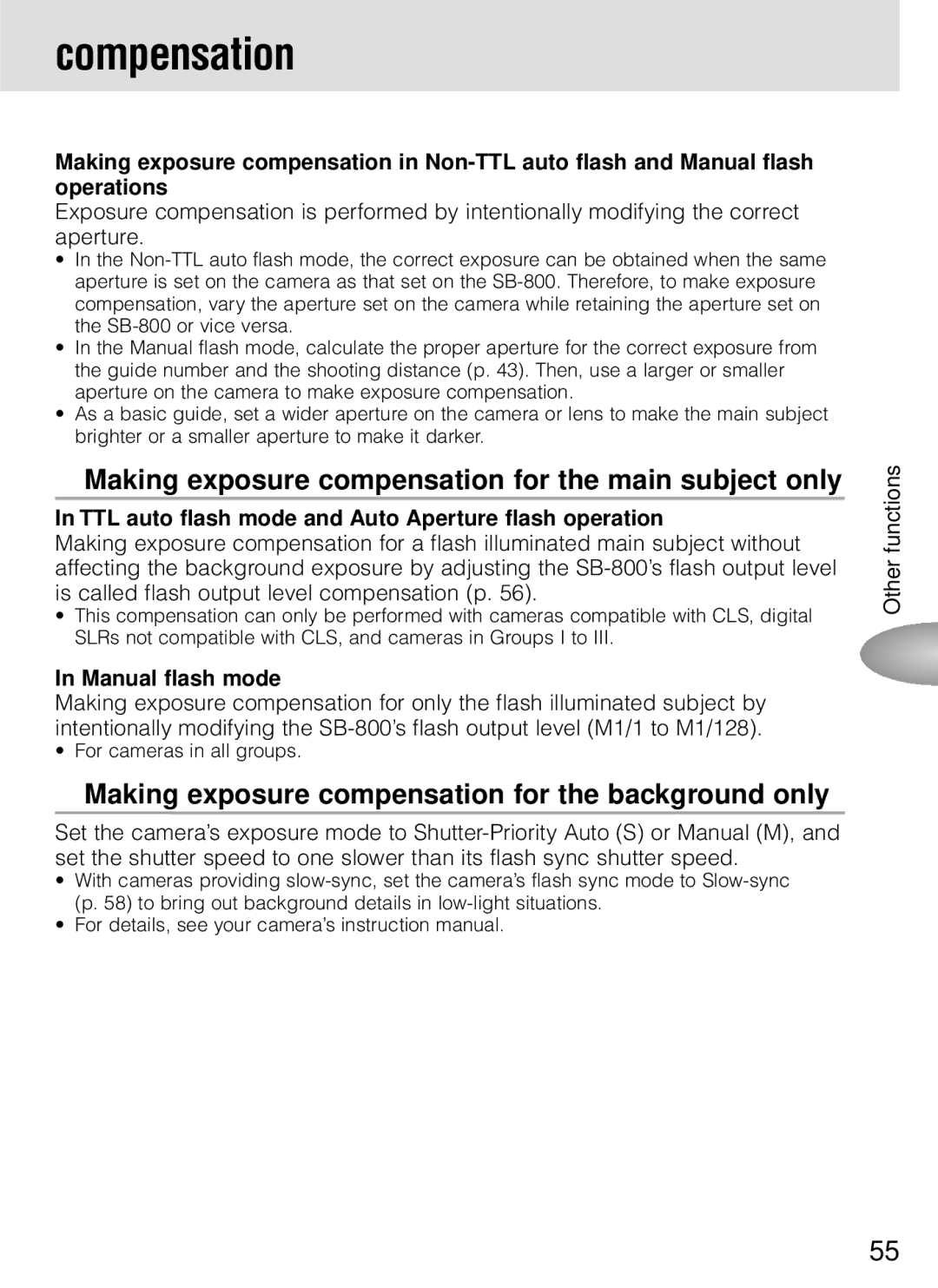
compensation
Making exposure compensation in
Exposure compensation is performed by intentionally modifying the correct aperture.
•In the
•In the Manual flash mode, calculate the proper aperture for the correct exposure from the guide number and the shooting distance (p. 43). Then, use a larger or smaller aperture on the camera to make exposure compensation.
•As a basic guide, set a wider aperture on the camera or lens to make the main subject brighter or a smaller aperture to make it darker.
■■■ Making exposure compensation for the main subject only
In TTL auto flash mode and Auto Aperture flash operation
Making exposure compensation for a flash illuminated main subject without affecting the background exposure by adjusting the
•This compensation can only be performed with cameras compatible with CLS, digital SLRs not compatible with CLS, and cameras in Groups I to III.
In Manual flash mode
Making exposure compensation for only the flash illuminated subject by intentionally modifying the
•For cameras in all groups.
■■■ Making exposure compensation for the background only
Set the camera’s exposure mode to
•With cameras providing
•For details, see your camera’s instruction manual.
Other functions
55
